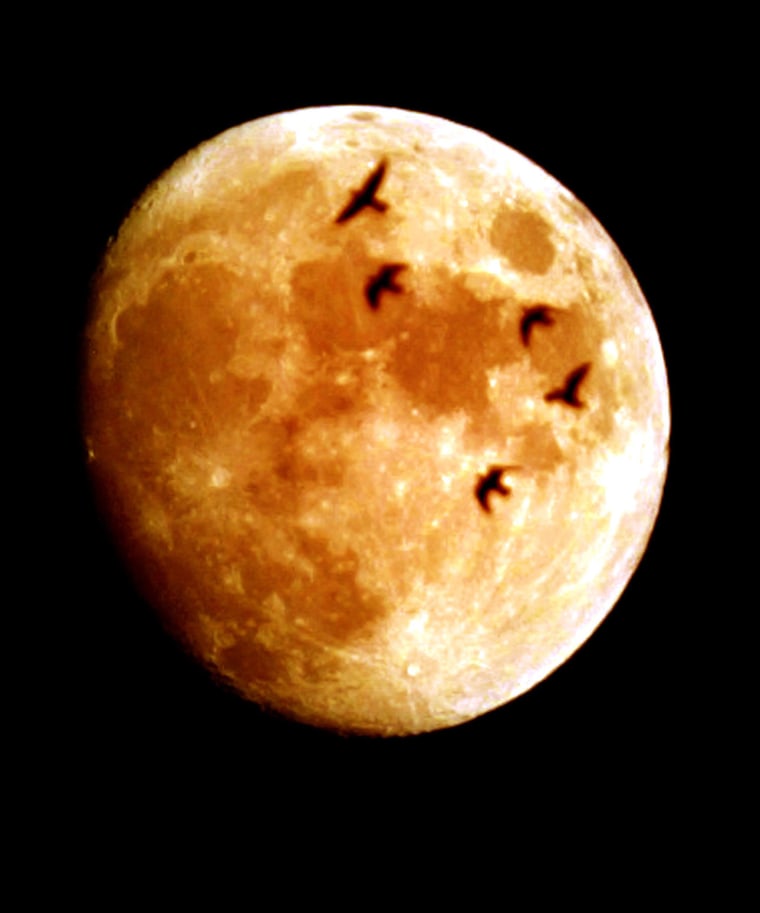The next full moon will occur March 6. Or will it? Technically speaking, the moon is never full.
Let's back up a moment. The actual moment of full moon — that time when the moon is opposite to the sun in the sky — can be found in any almanac. Some newspapers also provide the exact time. It occurs each time the moon has swung around on its roughly 29-day orbit.
We could then say that the moon is officially "full" for only one minute. The full moon of Feb. 6, for instance, occurred at 3:14 a.m. ET. In the very strictest sense, one minute before that time, the phase of the moon was a waxing gibbous; one minute after that time, it was a waning gibbous phase.
But the mechanics of the celestial alignment — the sun, Earth and moon all in a line — adds a twist to the idea of fullness.
The disk of the moon can appear 100 percent sunlit from Earth only if it is diametrically opposite to the sun in the sky. But at that moment the moon would be positioned in the middle of Earth’s shadow — and in total eclipse. So in any month when there is no eclipse, there is an ever-so-slight sliver of darkness somewhere on the lunar limb throughout those hours — or that moment — when the moon is passing through "full" phase.
So why isn't there an eclipse every month?
Because the plane of the moon's orbit is inclined 5 percent with respect to the plane of Earth's orbit around the sun. Only once every few months does a full moon occur when the orbits are lined up just right to create an eclipse.
People often refer to the moon as being full a day or two before or after the actual date of fullness. Yet, close inspection will usually reveal that the moon is not fully illuminated on these prior or subsequent days, but is indeed gibbous or slightly out of roundness.
How fast does the moon move?
So, just how long is the interval during which the full moon seems to appear perfectly round? And when can this effect first be noted with binoculars or the unaided eye?
In the course of one hour, the moon appears to move eastward against the background stars at roughly its own apparent diameter, or about half a degree. As a consequence, the lunar phase angle — the angle of illumination that the moon makes with the sun — changes, but very slowly. On the moon’s surface, this corresponds to only about 10 miles each hour. So the change from a disk that appears fully illuminated to one that shows a slight out-of-roundness can be rather subtle.
The full moon test
This test can be made March 6, when the full moon occurs at 2314 GMT, or 6:14 p.m. ET. For Europeans, the moon will be high in the south-southeast sky. For North Americans, the moon will either have just risen, or moonrise will be, at most, less than a few hours away.
When the moon sets about seven hours later for Europeans, will it still appear perfectly round for them, or ever so slightly out of shape? At about that same time the moon will be approaching its highest point in the sky over North America.
After about another six or seven hours — or at least a half a day after the time that the moon turned full — the moon will be getting ready to set over North America. By then, anyone looking carefully enough with binoculars should be able to detect a slight sliver of darkness (astronomers call this the terminator) along the western, or right edge of the moon.
